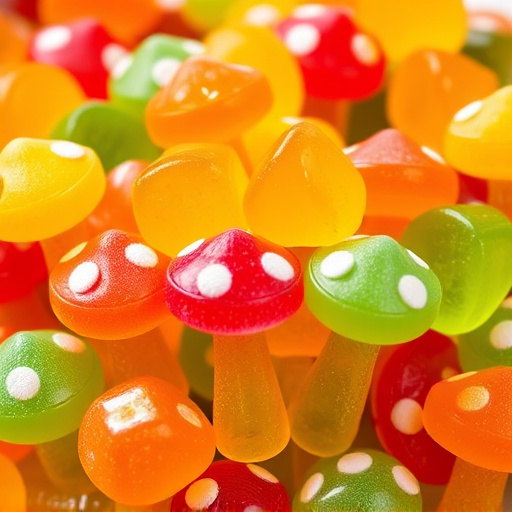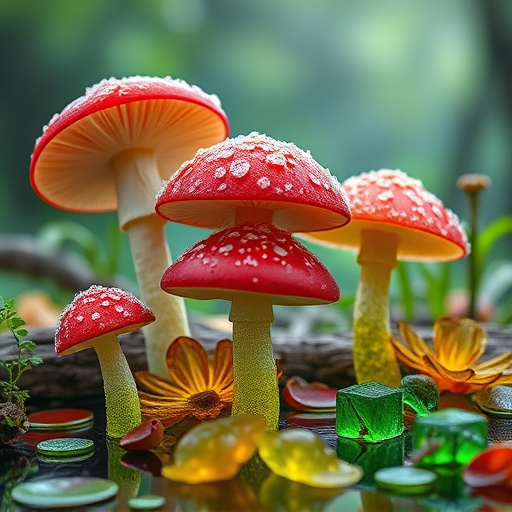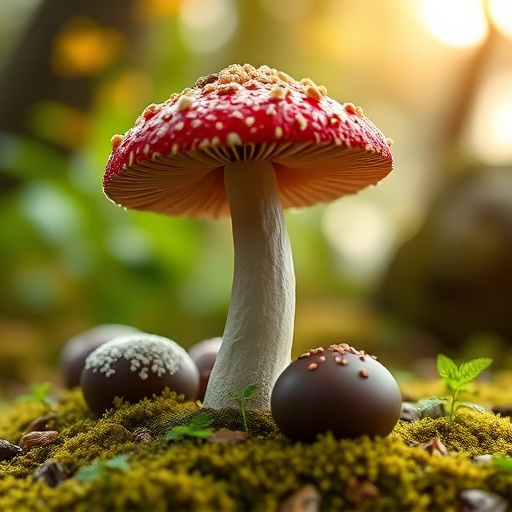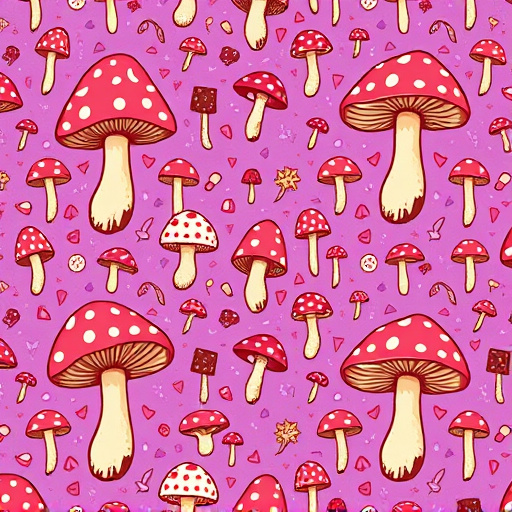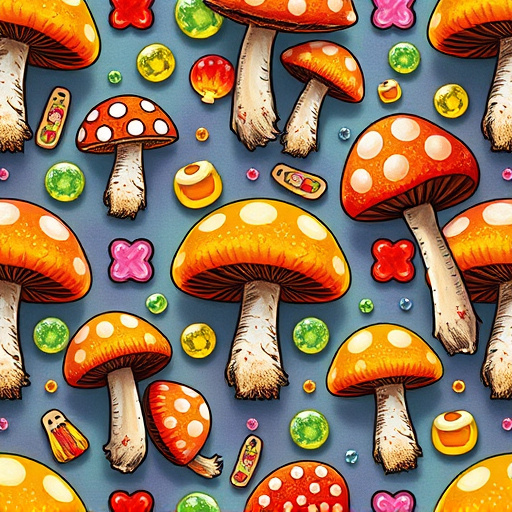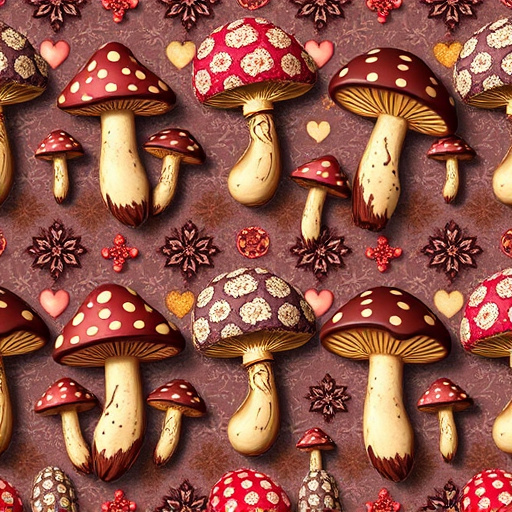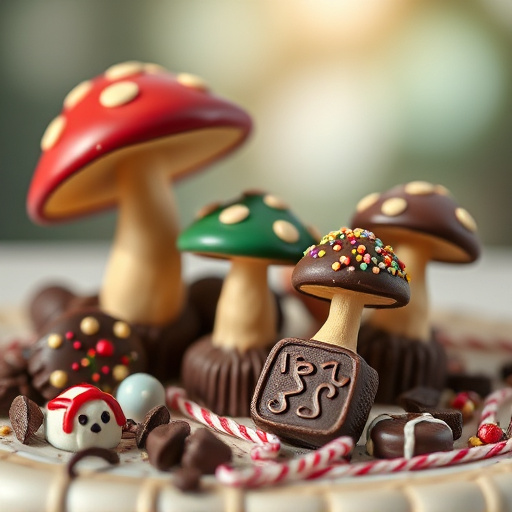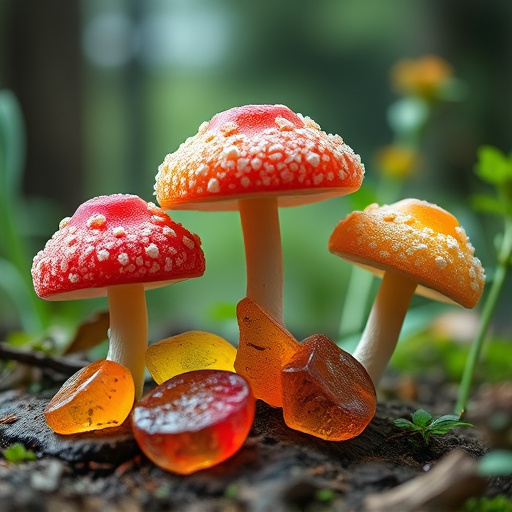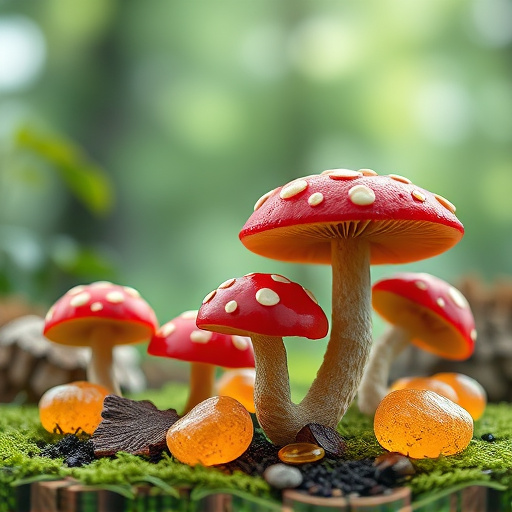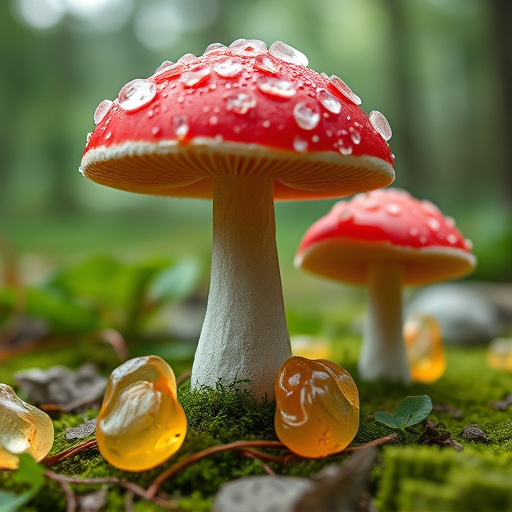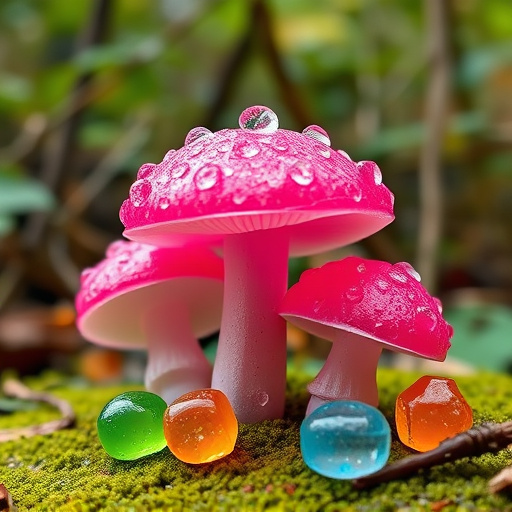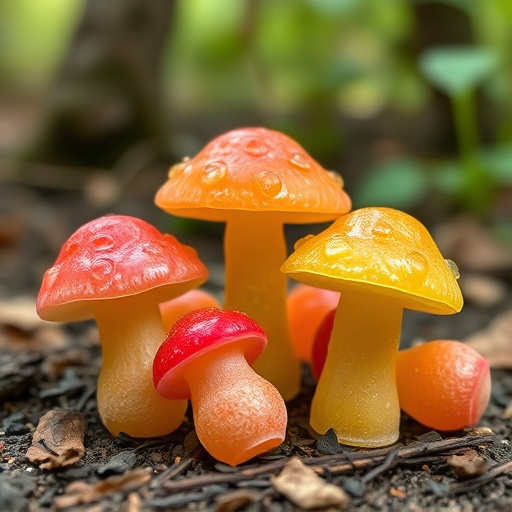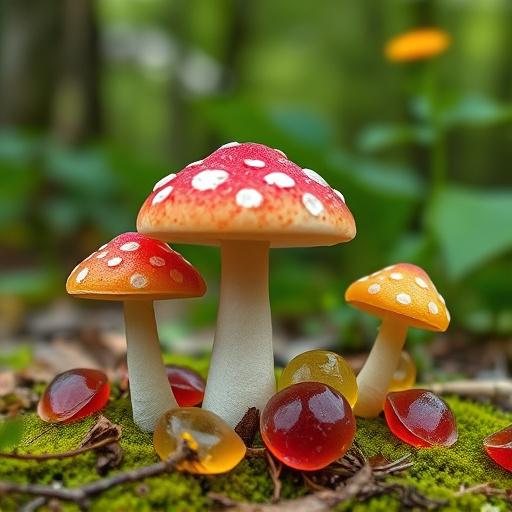"The Science Behind Magic Mushroom Gummies reveals how these modern treats use psilocybin, a natural serotonin receptor agonist, along with psilocin and other compounds from specific mushrooms. Encapsulated in gummies, they offer a precise, easily dosed therapeutic experience known for enhancing creativity and promoting psychological well-being in controlled settings. This innovative approach caters to recreational users and those seeking alternative mental health support, backed by research demonstrating psilocybin's potential in treating depression, anxiety, PTSD, and end-of-life anxiety."
Are magic mushroom gummies the new frontier in therapeutic treatments? With a growing body of scientific evidence highlighting psilocybin’s potential mental health benefits, the demand for these edible forms of the compound has surged. This article delves into the science behind magic mushroom gummies, exploring their composition, from the chemical compounds in psilocybin mushrooms to how gelatin converts psilocybin into its active form, psilocin. We also dissect their potential therapeutic applications and navigate the legal landscape surrounding their sale, offering insights into the risks and safety considerations for consumers.
- The Composition of Magic Mushroom Gummies
- – Chemical compounds in psilocybin mushrooms
- – Conversion of psilocybin to active form (psilocin) in the body
The Composition of Magic Mushroom Gummies

Magic mushroom gummies are a modern twist on traditional psilocybin-containing fungi, designed to offer a convenient and potentially therapeutic experience. These gummies often contain psilocybin, a naturally occurring compound that acts as a serotonin receptor agonist, along with other active compounds like psilocin. The science behind magic mushroom gummies lies in the way these compounds interact with our brains. Psilocybin is known to enhance creativity, induce mystical experiences, and promote psychological well-being when taken in controlled settings. By encapsulating these compounds in gummy form, manufacturers aim to provide a precise and easily dosed experience.
The composition of magic mushroom gummies also involves various flavorings, sweeteners, and other ingredients to create a palatable treat. While the exact formulations can vary, many gummies are made with natural or organic ingredients to ensure purity and quality. The process involves extracting psilocybin from specific species of mushrooms, careful measurement to achieve desired strengths, and then mixing these compounds with gelatin or pectin to form the gummy texture. This innovative approach to consuming psychedelic substances has sparked interest in both recreational users and those seeking alternative therapeutic options.
– Chemical compounds in psilocybin mushrooms
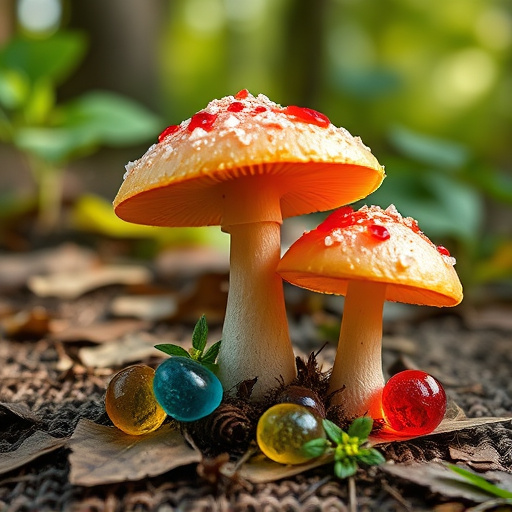
The science behind magic mushroom gummies revolves around the chemical compounds found in psilocybin mushrooms, primarily psilocin and psilocybin. These compounds are responsible for the psychoactive effects associated with consuming these fungi. Psilocin, a metabolite of psilocybin, acts as a serotonin receptor agonist, particularly targeting the 5-HT2A receptors in the brain. This interaction leads to altered perceptions, heightened senses, and the mystical experiences often associated with “magic mushrooms.”
Research into psilocybin has shown promising results in various therapeutic applications. Studies have explored its potential in treating depression, anxiety, post-traumatic stress disorder (PTSD), and end-of-life anxiety in terminally ill patients. The unique properties of these compounds offer a natural alternative for mental health support, making magic mushroom gummies a topic of growing interest in the wellness industry.
– Conversion of psilocybin to active form (psilocin) in the body
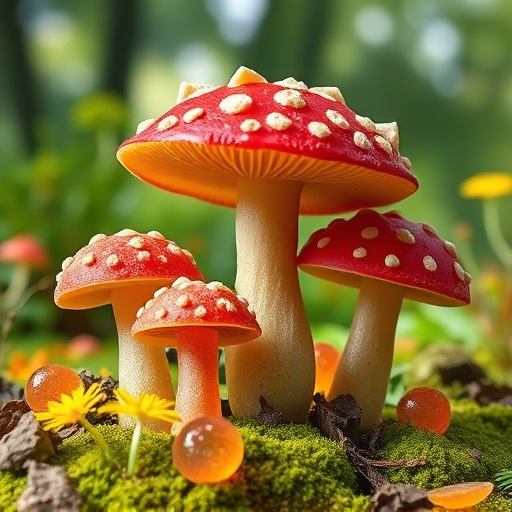
When you consume magic mushroom gummies, the active compounds, primarily psilocybin, begin a fascinating transformation within your body. Psilocybin is a natural compound found in certain types of mushrooms, and it’s known for its psychoactive effects. Once ingested, psilocybin is metabolized by the liver, where it converts into psilocin—the primary substance responsible for the ‘trip’ or altered state of consciousness associated with magic mushrooms. This conversion process is a key aspect of understanding how these gummies can have such a profound impact on mood, perception, and mental clarity.
The body’s ability to activate psilocybin into psilocin is a delicate balance of biochemical reactions. Scientists are still exploring the exact mechanisms at play, but it involves the inhibition of specific serotonin receptors in the brain, leading to heightened sensory experiences and cognitive alterations. This natural process has sparked significant interest in psychedelic research, not only for its potential therapeutic benefits but also as a fascinating example of how our bodies interact with unique compounds found in nature.
The science behind magic mushroom gummies reveals a fascinating journey where specific chemical compounds, notably psilocybin and its active metabolite psilocin, offer therapeutic potential. Understanding how these compounds interact with our bodies is crucial in the growing interest in their recreational and medicinal use. As research continues to explore the benefits of psilocybin-based products like gummies, navigating this landscape requires informed insights into both the composition and effects for safe and responsible consumption.
